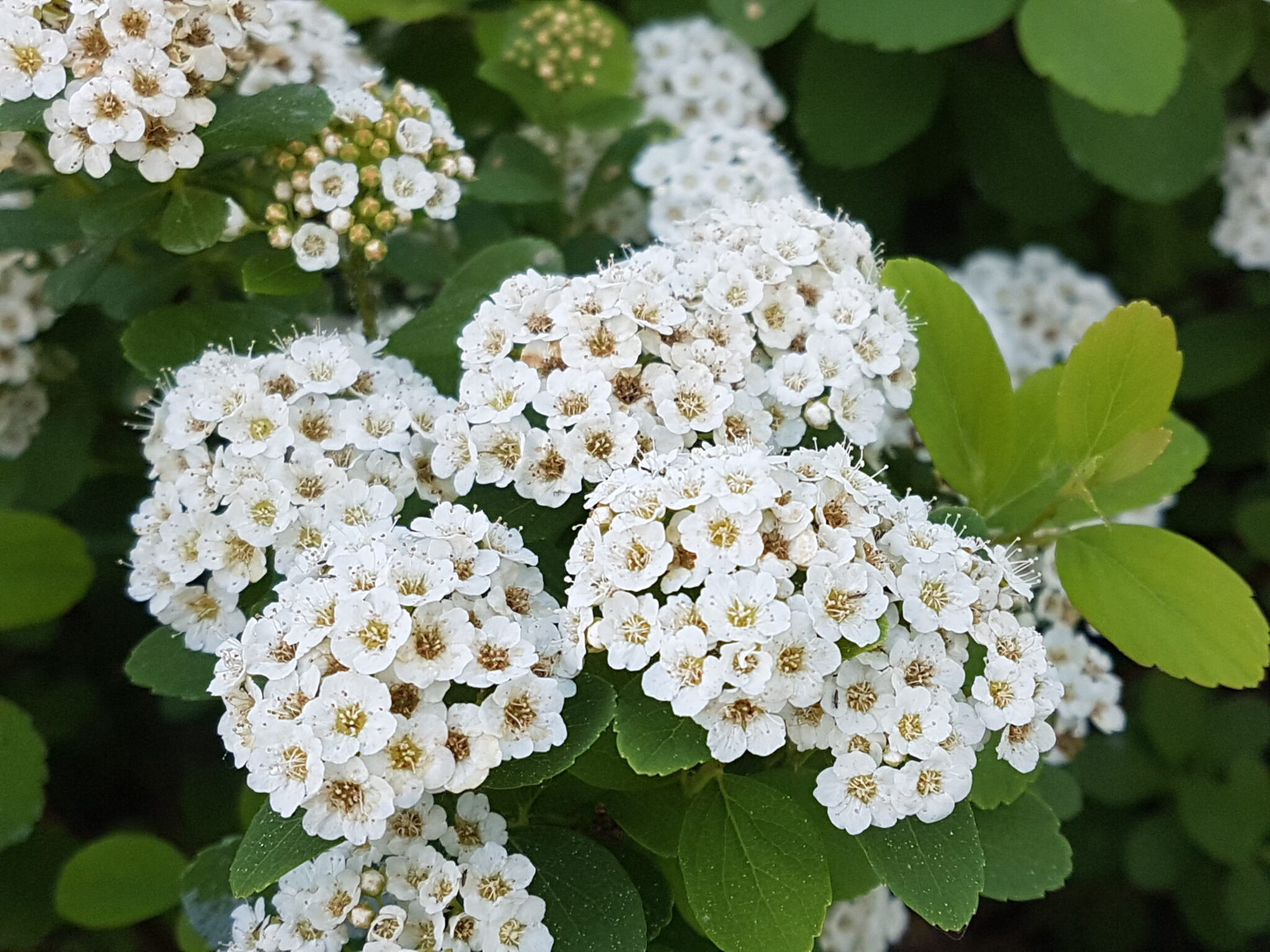

Plus since the deer seem to leave this specimen alone, for the most part, you won't have to worry about it getting munched on! You can plant a couple in a row to create an informal-looking hedge for loose borders. Tor Spirea's low-growing compact form makes it a great addition in a multitude of different ways.

#Birchleaf spirea tor how to#
Order one for your landscape from our expert growers at Nature Hills Nursery today! How to Use Tor Spirea in the LandscapeĮven experienced gardeners will tell you they have a hard time picking just one way to use this in their garden. This shrub, loved by you, your neighbors, and the local pollinators, won't stay available for long.

Neighbors are going to wish they too had a bush with half as much fall color! While other shrubs are settling in for the winter, Tor Spirea is still showing off in all its glory. The lovely foliage changes from deep green to an exciting orange streaked with red and purple. Butterflies and their splashy wings will simply add to the shrub's colorful nature!Īs the weather cools and the crisp breezes of fall roll in, Tor Spirea pulls yet another trick out of its sleeve. Spirea bushes are known to be a butterfly favorite and Tor Spirea is no exception. Of course, you'll have to be willing to share that beauty with your local pollinators. Its compact growth habit makes it ideal for hedges! Include in foundation plantings against the siding of your house or as a border for your garden. Its beauty starts in the spring with an abundance of dark green foliage sprouting from its branches. Tired of having bushes that only show off for a couple of weeks every year? We totally get it, that's why you'll want a Tor Spirea to your landscape. That, along with the dark green of the leaves, makes the perfect setup to adequately showcase the petite tiny white flowers, that sprout and cover Tor Spirea in the early summer. Cultivar name presumably comes from the Gaelic word torr meaning hill or mound, in reference to the plant habit.Look out Hydrangea and Lilac bushes! There's a new favorite in town! Tor Spirea (Spiraea betulifolia 'Tor'), sometimes called Birchleaf Spirea, is here and positively charming the locals with its multiseasonal interest! This deciduous shrub fills out into a neat, low-to-the-ground, mounded form. Foliage turns quality shades of orange, red and purple in autumn. Birch-like, dark green leaves (to 1.5” long) are oval and sharpely toothed. Tiny white flowers in small flattened clusters (corymbs) cover the foliage in late spring. ‘Tor’ typically grows 2-3’ tall in a dense, compact, rounded mound. Specific epithet comes from the birch genus ( Betula) and leaf ( folia) in obvious reference to the leaf shape. Genus name comes from the Greek word speira meaning wreath in reference to the showy flower clusters seen on most shrubs in the genus. lucida (shinyleaf spirea) which is native to western North America (British Columbia to Saskatchewan south to Oregon, Wyoming and Minnesota). (Pennsylvania south to Alabama and Georgia) and Spiraea betulifolia var.

corymbosa (shinyleaf meadowsweet) which is native to the eastern U.S. Varieties of this species include Spiraea betulifolia var. White flowers in clusters (corymbs) cover the foliage in mid-summer. Birch-like, round to egg-shaped leaves (to 2" long) have toothed margins. It is a dwarf shrub that typically matures as a dense rounded mound of foliage to 3' tall and as wide. Spiraea betulifolia, commonly called birchleaf spirea, is native to Japan and eastern Asia.


 0 kommentar(er)
0 kommentar(er)
